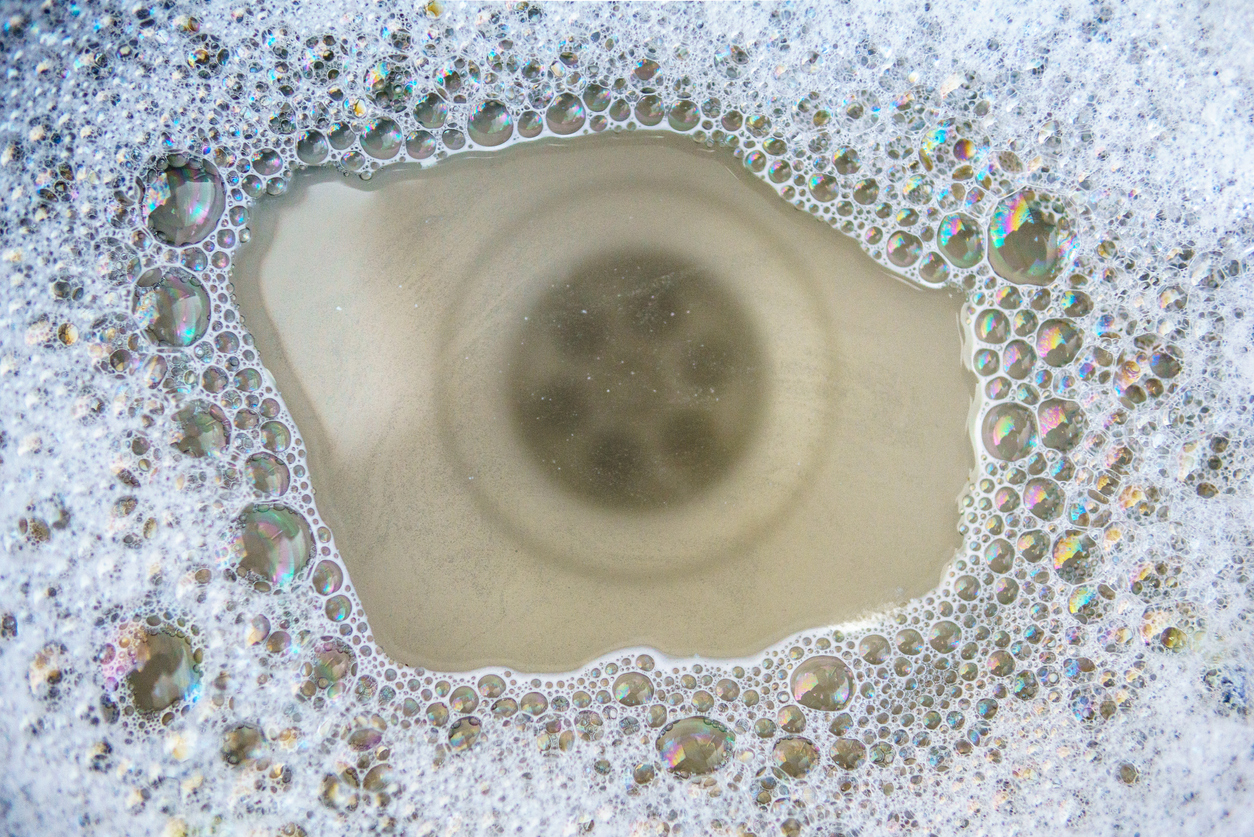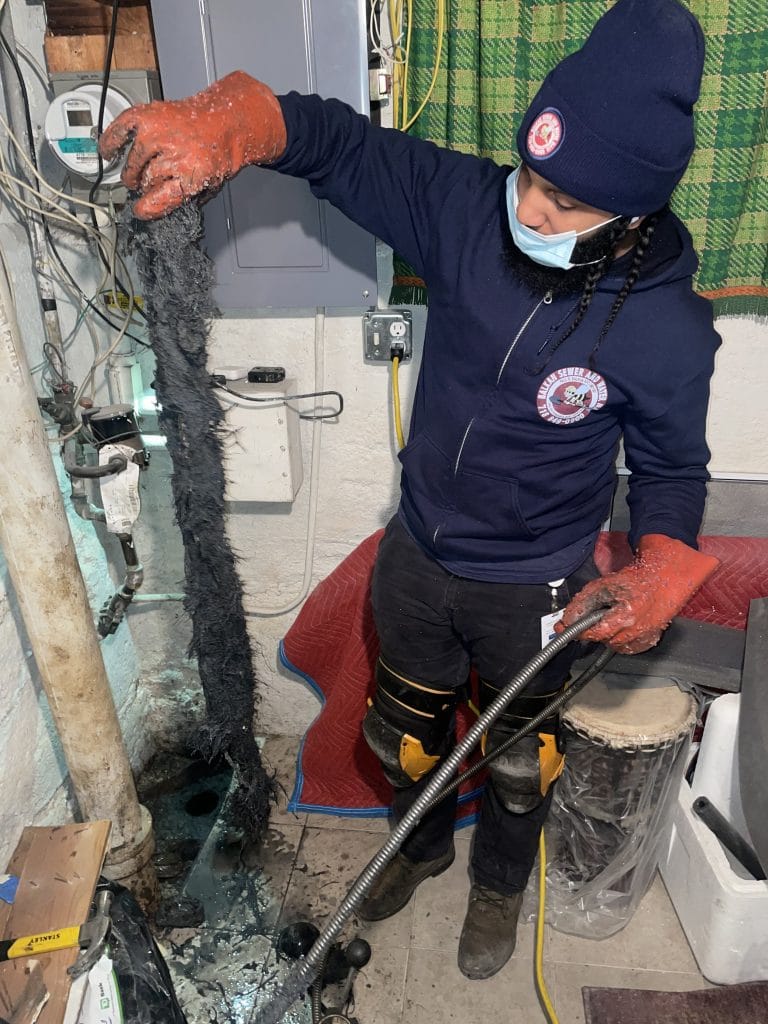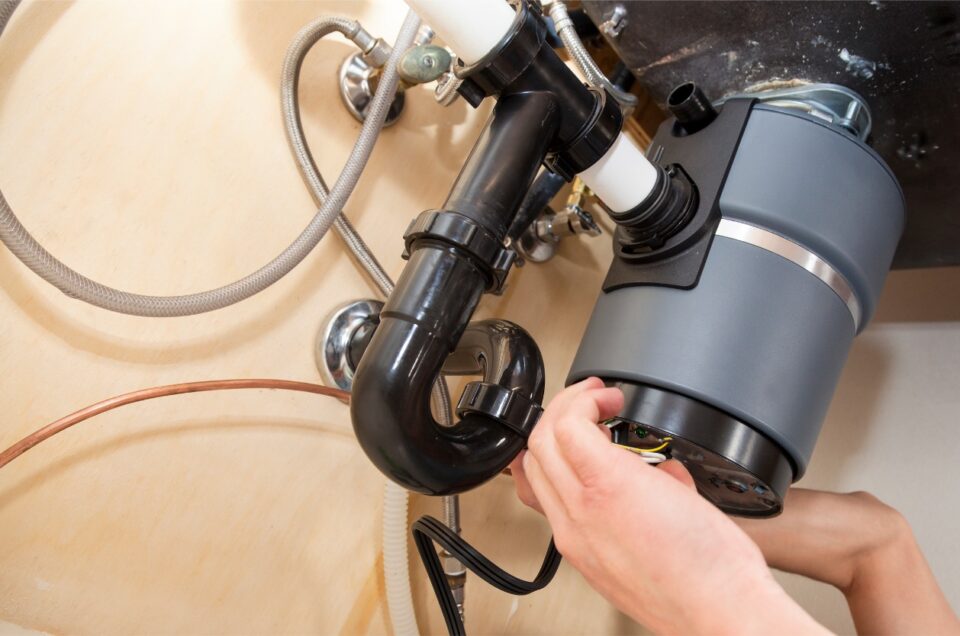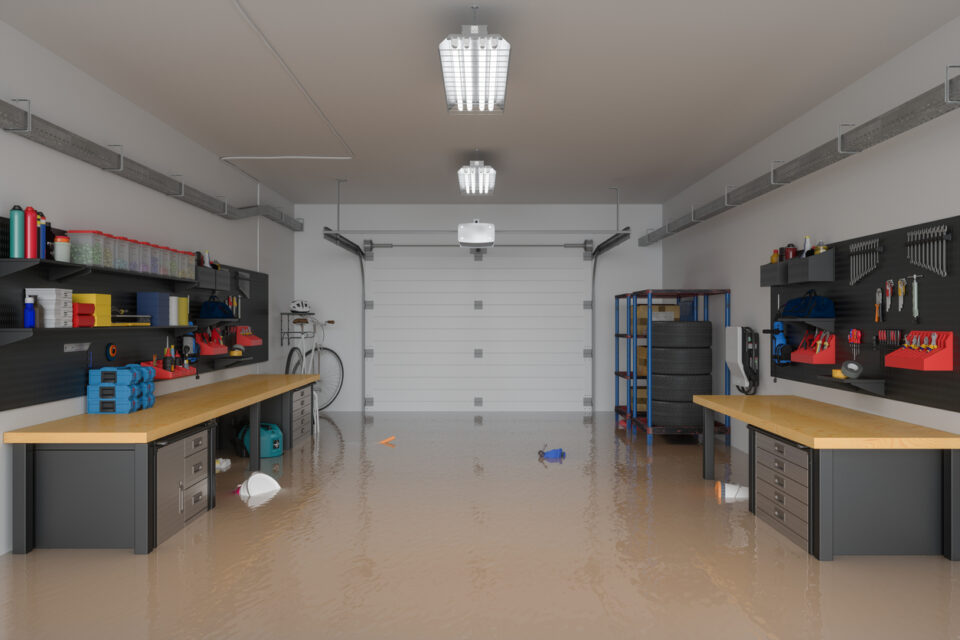A slow draining sink can be a real drag on your household efficiency. A slow bathroom sink drain builds up water every time you wash your hands, while a slow kitchen drain can become a health hazard during daily meal prep. While it might not be fully clogged, slow draining is often a sign that a clog is not far off because a blockage is forming or the risk is much higher – or both.
A Slow Draining Sink Cure is typically fast & DIY
Slow-draining sinks in your kitchen or bathroom will have different causes and different cures. Fortunately, many of those cures are quick and easy to enact in your home. You can often fix a slow draining sink with a quick flush and if DIY methods don’t work, a professional has more extensive options to ensure your sink starts draining properly again.
The 4 Major Causes of a Slow Draining Sink
The first step is to understand why sinks develop slow drains. The four most common causes are:
- Debris
- Oils, fats, and grease
- Hair
- Scale buildup
Debris can block the passage, allowing only some water to flow by and slowing your drain speeds. Oils, fats, and grease form water-resistant clogs and also build up along the inside of your drain pipes. Hair can make clogs worse by tangling to form a larger and larger clog. Meanwhile, scale or mineral buildup makes your pipes narrower over time. All of these 4 issues are the primary culprits causing a slow draining sink issue.
The right solution for your slow-draining sinks will depend on which of these options is most likely the cause. The risk varies between the kitchen and bathroom. Bathroom sinks are more likely to clog with hair, while kitchen sinks (and tubs where oil baths occur) are more likely to clog with oil. Hard water in your pipes, however, can cause scale-related slow drains anywhere.
Your slow drain may also be caused by corrosion, but this is less common.
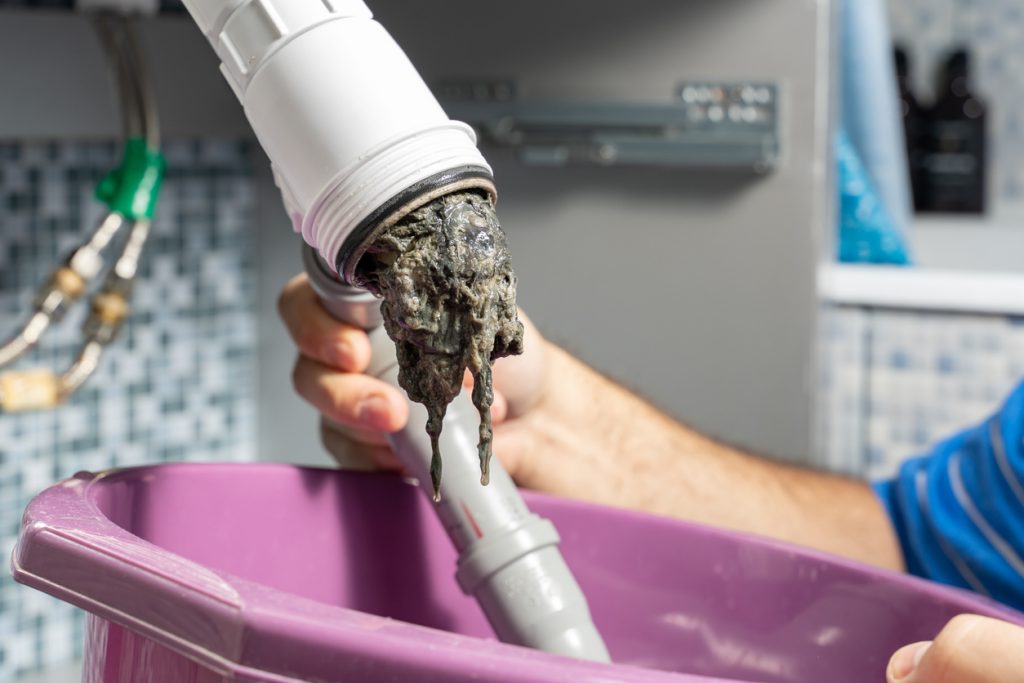
6 Quick Cures for a Slow Draining Sink
There are several easy DIY remedies to a slow sink drain in the bathroom, and to understand how do you fix a slow draining kitchen sink as well. You can try clearing the drain with available residential tools, and you can try flushing the drain to clear out the buildup inside your pipes. There are many different homemade drain-flushing recipes, but we do not recommend using baking soda combinations.
Fizzing drain sounds are not necessarily indicative of a drain-cleaning action
While the fizzing is impressive, the reaction is not necessarily good for cleaning your drains. Also, pouring too much powder down your drain can cause further problems. Instead, try the following five methods to quickly determine if you can easily fix your slow-draining sinks.
1. Remove the Sink Trap to Cure a Slow Draining Sink
In many cases, the quickest and surest way to cure a slow draining sink is to simply loosen and remove the P trap under your sink. Unless your strainer is clogged, the trap is the cause of almost all clogged or slow sink drains. Sometimes cleaning a sink trap can be done completely by hand. In other cases, a simple channel lock or wrench is needed.
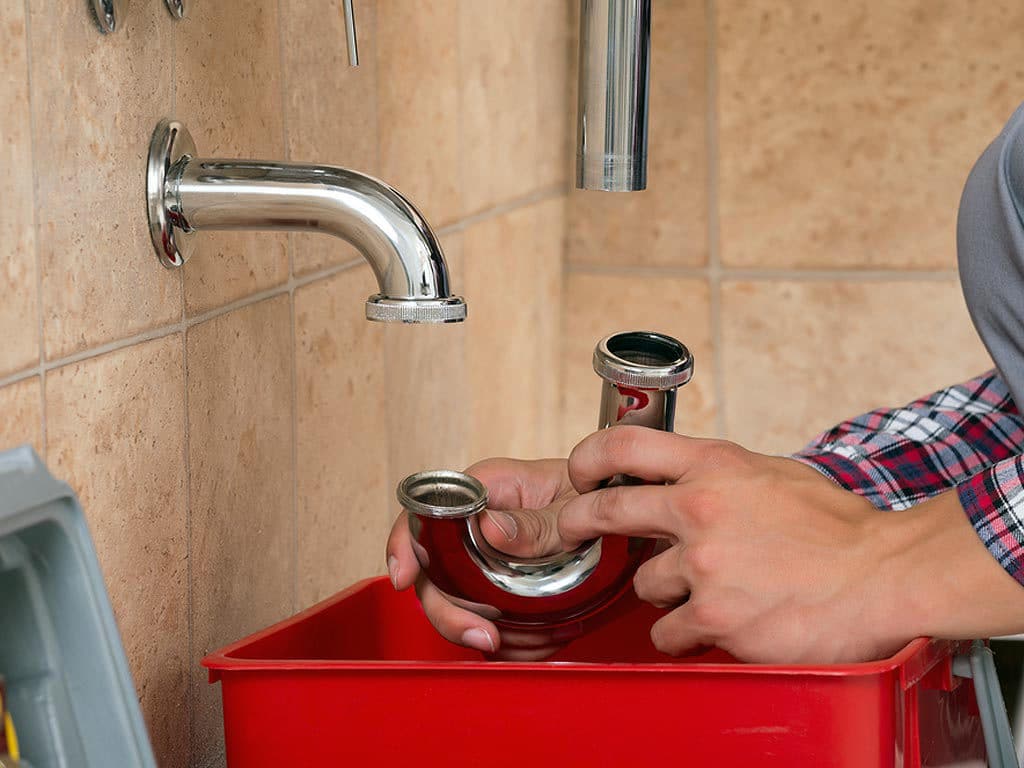
2. A Plastic Drain “Zip It” Tool
There are miniature plastic drain snake tools called”Zip It”s, (among other brand names). These are long flexible lengths of plastic with horizontal spines like a spiky ladder. These can help catch hair and other small debris lurking within a foot or two of your sink drain’s entry point. Keep a pack of Zip-Its below the bathroom sink and use them when you suspect a hair buildup.
3. Dish Soap Flush
If you suspect that oil and grease poured down the drain in the kitchen is the problem, try a dish soap flush. Fill a pot with hot (not quite boiling) water and add a hefty squeeze of dish soap (up to 1/2 cup). This will create a strong grease-cutting cleaning solution. The hot water will help to melt the grease and oil while the dish soap will help to break down heavier grease that has tried to form a clog or coated the inside of your pipes. This is among several ways to prevent grease-clogged drains.
Pour your largest pot or pitcher of the soapy mixture down your kitchen sink drain and wait half an hour before flushing with hot water from the tap.
4. Hot Water and Vinegar Flush
If you suspect hard water scale or food debris is the problem, try a hot water and vinegar flush. Mix (not quite boiling) hot water with an equal amount of white vinegar and pour it down your sink drain. This works in the kitchen or bathroom – or any other drain in the house because hard water is universal. The acid in the vinegar can also help to break down other types of clogs, as well.
Wait thirty minutes and flush the sink with warm water from the tap. Run the sink a while and see if your drain has sped up.
5. Plunge the Sink
If your sink is slow enough that it regularly fills with water, it might be just this side of a clog. If so, try plunging it. You will want a short-handled, simple cup plunger for the job. A good toilet plunger has a smaller section that fits into the bottom of the bowl, don’t use that. Instead, use a very simple cup-shaped plunger that fits directly over your sink drain.
While the sink is full of water, plunge the drain by fitting a seal over the drain hole and trying to pull whatever clog is in your pipes loose with firm plunges. You will usually know if plunging the sink has worked because it will drain quickly if you successfully loosen a clog.
6. Remove the Pop-Up
Lastly, some bathroom sinks have pop-up features that allow you to close the sink with a post behind the faucet. If your bathroom sink has this, that stopper mechanism can also become the hook for a clog. Unscrew and remove the pop-up and clean off the hook underneath. This may come with a tell-tale trail of hair and soap scum. If this fixes your problem, simply reinstall the pop-up once it is clean.
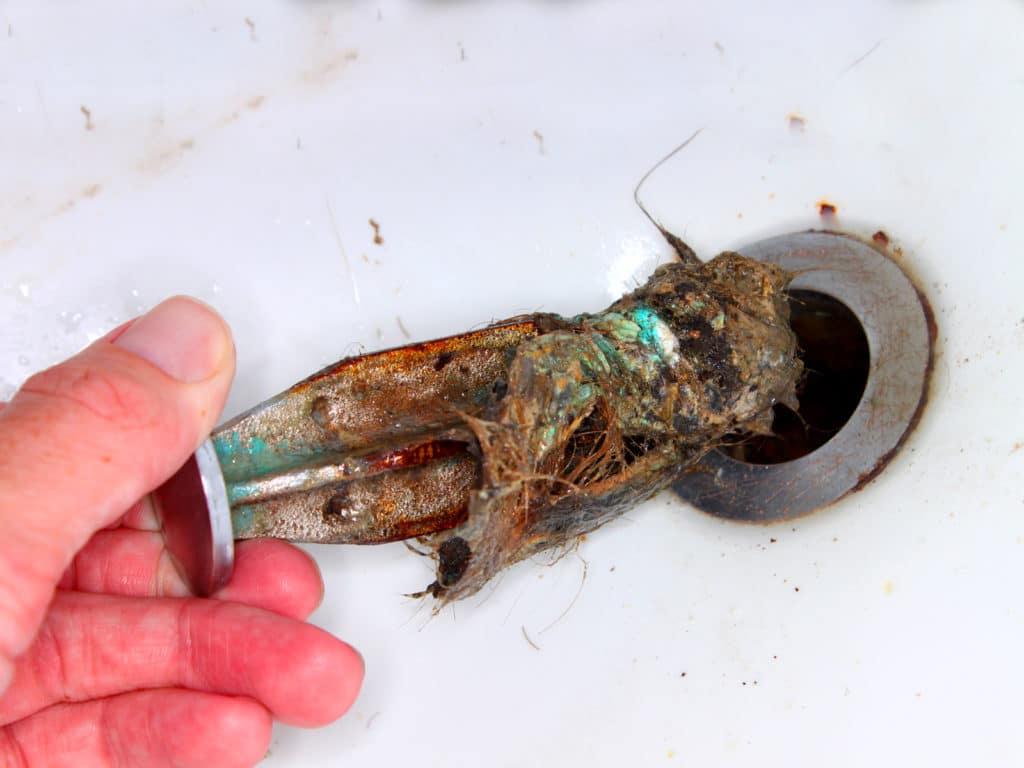
Professional Solutions to Slow and Clogged Sink Drains
If none of your DIY methods work, then it’s time to call a professional plumber to remedy your slow-draining sinks. We have a few tricks of our own that go above and beyond what most people can do with their sinks and drains.
Remove the Trap and Clean it Out
First, a professional plumber can check your trap. This is the hook-shaped pipe under the sink that helps prevent sewer smells from coming up through the drain. It is always full of water, but it is also the most likely place to clog or become the cause of a slow drain. By removing the trap, we can clean it out and this often restores the draining power of any sink.
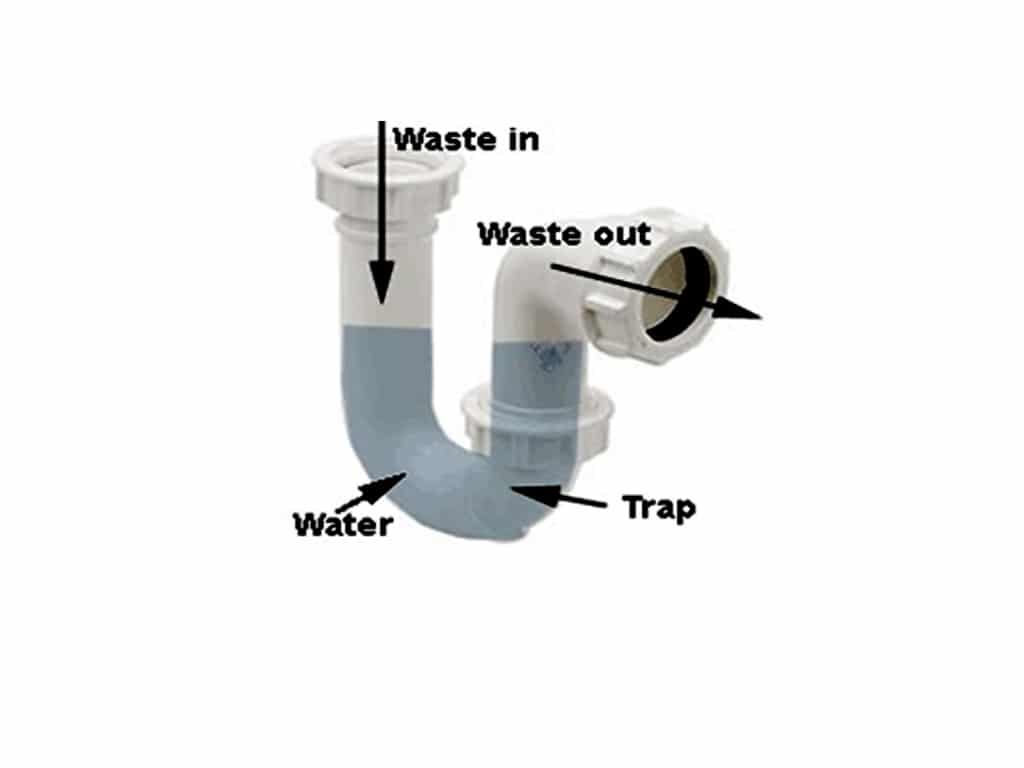
Snaking and Power Cleaning the Drain Line
If the problem is deeper, we can use a professional-length snake to check for debris or a power washing device to clean out your pipes further on. These methods are usually called for if you are experiencing a multi-drain problem in your home relating to shared drain lines or sewer connections.
Replacing Corroded Parts
Lastly, if your problem is caused by a corroded part that has built up corrosion and narrowed water passage in your drain line, a professional plumber can replace the part and restore your drain’s effectiveness at the same time.
Call Balkan Sewer & Drain Cleaning for Your Slow Drain Repairs
If you have slow-draining sinks at home that DIY methods just won’t fix, Team Balkan is here to help. Contact us today to inspect and repair any slow drain in the house and enjoy immediate response with professional solutions that will leave your drains running swiftly and reliably every time.

